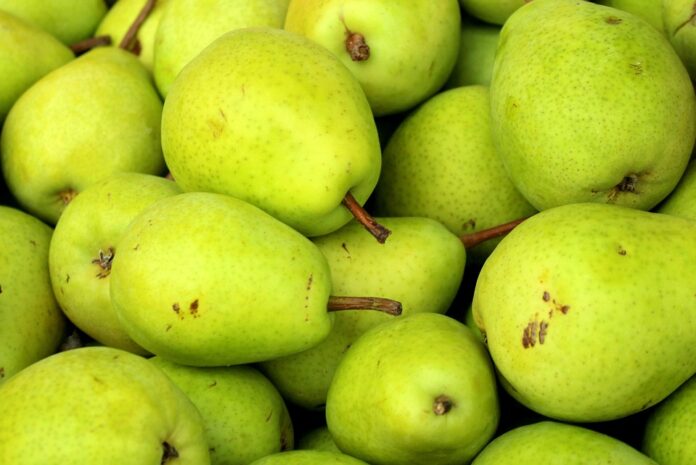Read: The Global Pear Industry – A Comprehensive Report
Introduction
The global pear industry has witnessed significant growth over the years, becoming a staple fruit in various markets. However, this growth comes with concerns regarding deforestation and water usage linked to pear production. This report aims to provide a detailed analysis of the environmental implications of pear cultivation, focusing on deforestation rates and water consumption, and their effects on ecosystems and local communities.
Understanding Pear Production
Pears are cultivated in various regions worldwide, with China, the United States, and Italy being the leading producers. In 2022, the global pear production volume reached approximately 25 million metric tons, with China alone accounting for about 70% of this total. The production of pears requires specific climatic conditions, including adequate rainfall and well-drained soil.
Deforestation and Pear Cultivation
Deforestation is a pressing issue that significantly impacts pear production. The expansion of agricultural land for pear orchards often leads to the clearing of forests, which can have devastating environmental consequences. According to the Food and Agriculture Organization (FAO), approximately 10 million hectares of forest are lost annually due to agricultural expansion, including fruit production.
Impact of Deforestation on Ecosystems
The loss of forests contributes to biodiversity decline, as many species lose their habitats. In regions where pear production is expanding, such as parts of South America and Asia, deforestation has led to the endangerment of various plant and animal species. The disappearance of these ecosystems disrupts the balance of nature and can lead to soil erosion and decreased air quality.
Case Study: Pear Production in South America
In South America, especially in countries like Argentina and Chile, the increasing demand for pears has prompted farmers to clear forests for new orchards. Between 2010 and 2020, Argentina lost approximately 1.5 million hectares of forest, with a significant portion attributed to agricultural expansion. This deforestation has not only harmed local wildlife but also affected indigenous communities who rely on these forests for their livelihoods.
Water Usage in Pear Production
Water consumption is another critical concern in pear production. The cultivation of pears is water-intensive, requiring approximately 500 to 800 millimeters of water per year, depending on the climate and soil conditions. In regions where water is scarce, the demand for irrigation can exacerbate existing water shortages.
Water Footprint of Pears
The water footprint of pears varies significantly by region. For instance, in California, which produces a substantial portion of the United States’ pears, water scarcity has become a pressing issue. The agricultural sector consumes around 80% of the state’s water supply, with pear orchards contributing to this consumption. The average water footprint for producing one kilogram of pears in California is estimated to be around 560 liters.
Impacts of Water Usage on Local Communities
High water usage in pear production can lead to conflicts over water resources, especially in arid regions. In places like California, farmers often compete with urban areas for limited water supplies, which can create tensions within communities. Moreover, the diversion of water for agricultural use can negatively impact local ecosystems and reduce water availability for indigenous flora and fauna.
Strategies for Sustainable Pear Production
To address the concerns of deforestation and water usage in pear production, several strategies can be implemented to promote sustainability.
Agroforestry Practices
Agroforestry involves integrating trees and shrubs into agricultural landscapes, which can help mitigate deforestation. By planting pear trees alongside other crops or native species, farmers can maintain biodiversity, improve soil health, and reduce the need for chemical fertilizers. This practice not only supports the environment but can also enhance local ecosystems.
Efficient Irrigation Techniques
Implementing efficient irrigation methods, such as drip irrigation, can help reduce water consumption in pear orchards. Drip irrigation delivers water directly to the plant roots, minimizing evaporation and runoff. According to the USDA, drip irrigation can reduce water usage by up to 50% compared to traditional irrigation methods.
Certification and Sustainable Practices
Encouraging certification programs for sustainable farming practices can incentivize pear producers to adopt environmentally friendly methods. Certifications like Rainforest Alliance and Fair Trade promote sustainable agriculture by ensuring that farms adhere to strict environmental and social standards. This not only helps protect ecosystems but also appeals to environmentally conscious consumers.
Consumer Awareness and Demand for Sustainable Pears
As environmental concerns rise, consumer awareness and demand for sustainably produced pears are increasing. According to a survey conducted by the International Pear Council, over 60% of consumers are willing to pay a premium for sustainably sourced pears. This shift in consumer behavior presents an opportunity for producers to adopt more sustainable practices and capitalize on the growing market for eco-friendly products.
Marketing Sustainable Pears
Marketing strategies that highlight sustainable practices can attract environmentally conscious consumers. Producers can leverage social media platforms and online marketing to educate consumers about the environmental impact of pear production and the importance of sustainability. By showcasing their efforts to reduce deforestation and water usage, producers can build a loyal customer base that values sustainability.
Conclusion
The concerns surrounding deforestation and water usage in pear production are critical issues that need to be addressed to ensure the long-term sustainability of the industry. By implementing sustainable practices, promoting consumer awareness, and adopting innovative agricultural techniques, the pear industry can mitigate its environmental impact while continuing to meet global demand. The future of pear production lies in balancing agricultural productivity with environmental stewardship, ensuring that both ecosystems and communities thrive.
References
1. Food and Agriculture Organization (FAO) – Global Forest Resources Assessment.
2. USDA – Drip Irrigation Efficiency Reports.
3. International Pear Council – Consumer Behavior Survey on Sustainable Products.
4. Rainforest Alliance – Certification Standards for Sustainable Agriculture.




